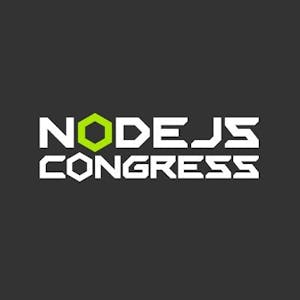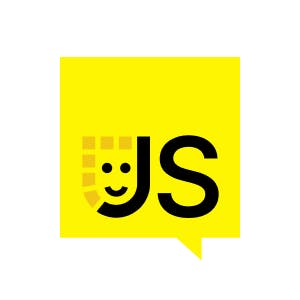Video Summary and Transcription
Kanika Tover discusses supercharging agile teams with AI, emphasizing an agile mindset, adaptability, and collaboration. Generative AI tools enhance productivity gains, development speed, and efficiency in agile teams. AI integration improves planning, development, testing processes, feedback facilitation, and communication efficiency. Core AI platforms like OpenAI and Chat GPT-5 are crucial for text generation. Future trends include AI evolving into team assistants and agents for tasks. Real-life AI applications focus on efficiency and productivity enhancement. AI collaboration improves meeting efficiency, technical debt management, and customer focus.
1. Analyzing AI Integration in Agile Teams
Kanika Tover discusses supercharging agile teams with AI and shares her background as an AI enthusiast and experienced professional. Emphasizes the importance of an agile mindset, adaptability, and collaboration when integrating AI into team processes.
Hey everybody, my name is Kanika Tover, and I'm super excited to be here today at the Tech Lead Conference. Today I'm going to be talking about how we can supercharge our agile teams using generative AI. With this amazing boom in excitement with AI, I truly believe that agile teams can use AI for efficiency, innovation and collaboration. So today I'm going to be walking through some frameworks and some best practices on how you can use AI with agile.
All right. Let's get into get into today's talk. Who is Kanika Tover? I'm a wife. I was born in Washington, D.C. I have 20 years of GovTech experience, so I've been working with software development teams for over two decades. I'm a senior AI product manager. I'm a certified Scrum Master, certified Scrum product owner. And recently I became a certified agile facilitator. Just a quick little fun fact about me. I love collecting sneakers. So I love collecting all types of sneakers from Nike to Adidas to Reebok to Puma. I have a huge collection of sneakers. And since we're talking about AI today, just want to let you know, I am a huge AI geek. I am excited about everything that's happening in the tech space when it comes to AI.
So let's get into today's talk. The first thing that we need is an agile mindset if we are going to supercharge our teams with using AI. The first thing that I think is really going to help us be able to use AI and be successful is that we're going to have to be able to adapt. We have we're going to have to be able to embrace change. AI is moving at such a fast pace. And I think that we are going to have to adapt with the trends, with the tools and the technologies. The next thing is that we're going to have to really focus on collaboration. We're going to have to leverage AI to work with our diverse teams and stakeholders. This is going to be super important. We're going to be using AI now as a teammate. So collaboration still doesn't start with our teams.
2. Enhancing Agile Team Efficiency with Generative AI
Focusing on continuous improvement and the impact of generative AI on productivity gains in agile teams, including faster task completion and time-saving documentation creation. Integration of generative AI tools like text generation, coding technologies, custom agents, and visual creation enhances efficiency and accelerates development processes.
So collaboration still doesn't start with our teams. And the last thing is we're going to have to focus on continuous improvement. I know we're using AI to move faster, but we still need to focus on how we can iteratively develop new products and services and optimize our existing processes. 71 percent of organizations, according to the Project Management Institute, are currently using agile methodologies, which is a significant increase from the last five years. So an agile mindset is going to be extremely important.
Generative AI is a branch of artificial intelligence that focuses on creating new content through various forms like text, images, audio, video, code, and 3D designs. There are four main types of generative AI: text generation, coding technologies like GitHub copilot, custom agents, and visual creation tools such as Daly and Mid Journey. These tools aid in faster completion of tasks, creation of documentation, and generation of ideas for strategic activities.
Teams using generative AI are experiencing productivity gains, such as completing tasks 20% faster, saving up to 60% of time in creating documentation, and saving team members close to 2.7 hours per week. This technology enables efficient completion of user stories, product requirements, project plans, and presentations. The integration of generative AI into the development lifecycle enhances efficiency and accelerates the delivery pace of teams.
3. Leveraging Generative Tools for Agile Productivity
Text generation tools like chat, GPT, and Claude, with coding technologies such as GitHub copilot, custom agents, and visual creation tools like daily and mid journey, enhance development speed and efficiency. Teams experience productivity gains with faster task completion, time-saving documentation creation, and strategic activity facilitation. Focus on quality improvement, collaboration, and team satisfaction is crucial for higher productivity and agile team performance.
Text generation is using tools like chat, GPT and Claude, where humans can go in and they can actually prompt these tools to do things like create user stories and documentation for our scrum and development teams. Also, we have coding technologies like GitHub copilot that can generate and explain and optimize and refactor code through natural language descriptions. These are tools that I think we will see a lot of our developers using today and in the future.
Then we have custom agents. These are specialized large language models that are trained on our organization's data. These types of custom agents, some people refer to them as agents. They can actually help us make better decision making and they can automate workflows and tasks that we don't want to do on a regular basis anymore. Then we have visual creation with tools like daily and mid journey. These types of tools can generate images, wireframes and design concepts through text descriptions. So this is just a few things that we can use as we are doing things within our development lifecycle that can help us do things a lot faster.
What are some of the productivity gains? We are seeing teams who are completing tasks at a faster rate of 20 percent. Traditionally, teams were moving a lot slower because they were doing things in a way that wasn't as efficient. But now we're seeing text being completed very fast. We're also saying people are able to create documentation and they are saving time up to 60 percent. They are using this to create using documentation when it comes to generative. They're using it to create user stories, product requirements, documents, project plans and presentations. Then we are seeing that each team member is saving close to two point seven hours a week because they're using it to generate ideas, using it for strategic activities. And they are just being able to deliver at a faster pace. So I foresee that we are going to see a higher productivity and agile teams using generative. The next thing we're seeing is the focus on quality improvement, collaboration, and team satisfaction.
4. Optimizing Agile Processes with Generative AI
Teams focus on quality improvement, collaboration, and satisfaction with generative tools, enhancing tasks' manageability and quality of work. AI integration in the agile lifecycle improves planning, development, and testing processes, promoting thorough code reviews. Utilizing AI in sprint retrospectives and daily stand-ups enhances feedback facilitation, performance analysis, and team efficiency.
The next thing we're seeing is the focus on quality improvement, collaboration, and team satisfaction. Teams are experiencing higher satisfaction levels, up to 42 percent, and are creating artifacts 35 percent faster. Teams are finding tasks more manageable with generative tools, enhancing clarity, completeness, and actionability. Quality improvement is evident in the production of high-quality work through collaborative efforts.
Exploring the integration of generative AI in the agile lifecycle, planning and preparation involve utilizing AI for product backlog refinement and sprint length prediction. Generative AI aids in developing user stories and managing the product backlog efficiently. Development and testing benefit from AI-generated code, test case generation, and automation, promoting a more thorough code review process.
Review and improvement focus on utilizing AI in sprint retrospectives for feedback facilitation and performance enhancement through user and team feedback analysis. Collaboration and communication are streamlined in daily stand-ups by tracking actions and next steps promptly for improved team efficiency.
5. Implementing Generative AI in Agile Practices
Teams focus on quality improvement and collaboration. Generative AI supports the agile life cycle from planning to testing, enhancing development processes. Utilizing AI in sprint retrospectives and daily stand-ups improves feedback facilitation and communication efficiency. Core generative AI platforms like OpenAI and Chat GPT-5 are key tools for text generation in documentation.
And the next thing we're seeing is quality improvement. Teams are producing quality products and works collaboratively. Let's delve into leveraging generative AI in the agile life cycle, particularly in planning and preparation. AI assists in product backlog refinement, sprint length prediction, and user story development. Generative AI is also beneficial for development, enabling code generation and automation for thorough code reviews and testing. Review and improvement involve using AI in sprint retrospectives for feedback facilitation and performance enhancement.
Collaboration and communication in daily stand-ups are streamlined with AI to track actions, next steps, and meeting notes efficiently. Aligning an agile mindset with the right tools is essential for agile teams. Core generative AI platforms such as OpenAI and Chat GPT-5 are popular choices for text generation and documentation.
6. Utilizing Generative AI for Agile Development
Developers use generative AI for code generation and testing, enhancing development processes. AI aids in facilitating feedback and recommendations for team performance improvement. Collaboration and communication efficiency are boosted in daily stand-ups with AI tracking actions and meeting notes. Core AI platforms like OpenAI and Chat GPT-5 are crucial, along with tools like GitHub Copilot and Streamlit for text generation and prototyping.
The next thing is we're going to be using generative AI for development and testing. Developers are going to be able to use AI to generate code. I know everybody's excited about vibe coding. So I foresee vibe coding sticking around, and we're going to see a lot of development being done in that way. For testing, we're going to take those vibe coding exercises and generate test cases using AI. We're going to be able to also automate testing of our applications and mobile apps. I foresee developers being able to look at their code and see it from a better perspective using AI throughout code reviews.
Review and improvement involve developing quality products and services to review and improve. In sprint retrospectives, we'll use AI to facilitate feedback and get recommendations on how to enhance team performance. Collaboration and communication in daily stand-ups will be enhanced to track actions, next steps, and meeting notes efficiently. Leveraging AI will enable faster tracking of daily stand-up actions and summarizations, as well as distributing meeting notes to developers, end-users, and leaders.
Agile teams need to align an agile mindset with the right tools for success. Core generative AI platforms like OpenAI and Chat GPT-5 are popular choices. Additional tools like GitHub Copilot and Claude provide significant support for text generation and code development. In the realm of large language models, tools like Lane Chain and Streamlit offer frameworks for custom power applications and prototyping systems. Tools such as Astro Database Vector Core cater to retrieving organizational data for enhanced decision-making.
7. Exploring Lesser-Known Generative AI Platforms
Core generative AI platforms like OpenAI and Chat GPT-5 are popular for text and code generation. Tools such as GitHub Copilot and Streamlit aid in prototyping. Proper engineering is essential for maximizing the benefits of AI tools. User story generation with tools like Chat GPT is crucial for creating and testing user stories.
So we all know that there are some core generative AI platforms that some of us have already been talking about. Let's delve into some lesser-known ones. OpenAI and Chat GPT-5 are popular choices for text generation. GitHub Copilot is excellent for code generation. Claude offers an alternative large language model. Lane Chain is crucial for custom power applications, while Streamlit is great for prototyping. Astro Database Vector Core aids in retrieving organizational data, and Langflow is a visual builder for generation workflows.
Understanding our requirements before adopting tools is essential for success. Proper engineering is vital for utilizing generative AI effectively. User story generation is key, where tools like Chat GPT can assist in creating user stories and acceptance criteria. It's crucial to grasp prop engineering to maximize the benefits of AI tools. GPT can help extract user story formats and acceptance criteria for testing against user stories.
8. Utilizing Astro Database Vector Core and Langflow
Astro Database Vector Core and Langflow are essential tools. Understanding requirements before tool adoption is crucial. Prop engineering is vital for maximizing benefits from AI tools.
Then we have Astro Database Vector Core. This is for retrieving organizational data. And then we have Langflow, which is a visual builder for retrieval of augmented generational generation workflows.
All right. So these are just some popular tools. But we also need to make sure that we know our requirements before we adopt any tools on this list. Good requirements need to be aligned with great tools that align with what we need to build for our end users.
So let's talk about prop engineering. Prop engineering is so important. It's such a crucial skill for agile teams to adopt, because if you're going to use any of those core generative AI core platforms, you're going to have to understand how to prop engineer so you can get your most bang for your buck. These tools only give you quality if you understand how to prop them.
9. Leveraging AI for User Story Generation
User story generation with AI tools enhances team efficiency. Collaborative decision-making with AI ensures unbiased perspectives. AI aids in identifying risks, improving decisions, and providing real-time reporting.
These tools only give you quality if you understand how to prop them. So let's talk about user story generation. When we're generating user stories, we can go into chat a tool like chat GPT and we can go in and we can ask chat GPT. Give me five user stories based upon this type of user wanting to do this type of goal. And this is the benefit of what that user is trying to accomplish. So when we actually have GPT as an admin, I need to be able to access user groups in order to manage. Permissions, we are going to extract GPT to give us that information in a user story format, but then also to give us the acceptance criteria so we can test up against the user story. User story creation is going to be so amazing for teams. It will allow you to move faster and document requirements, document requirements a lot faster. Let's talk about developing our sprint goals. We're going to be able to utilize chat GPT as well, or claw to develop a sprint goal based upon the user stories that we develop. So we can go in and we can say, create a concise, motivating sprint goal based upon these list of user stories. And it will give us measurable information on how we can align our sprint goals and estimating how long it would take, according to our product vision. This is going to help us do sprint planning so much more efficiently. And the last thing is we're going to do retrospectives, sprint retrospectives are going to be an amazing way to be able to improve over time each sprint. We're going to take this information that we get from our sprint retrospective notes, from the feedback that we receive, and we're going to go and ask these AI tools to help us identify patterns, summarize key insights and give me concrete action items that I can take back to the team so we can do things better the next sprint. So these are just three ways prompt engineering can help us move faster.
All right. So let's talk about collaboration and decision making and how AI can be a neutral facilitator. One thing I love about AI that is going to give us an unbiased approach to how we can do things better. It's going to give us the facts, how we can do our retrospectives better. How can we do our planning sessions better? So it's going to give us a neutral perspective. Another thing that I love about using utilizing generative AI tools, it will identify potential risk dependencies and it will help us make better decisions as we're building quality products for our end users. So we want to know what's going on before it even happens. And the next thing is that we will give real-time status reporting back to our stakeholders and back to management. So it's so important to have all three of these things so we can get the best bang for our buck when we're developing products, but also so our products can generate revenue in a non-neutral way where we're getting that real-time feedback from AI. All right. So what are some challenges? We know that a lot of teams are really had a lot of challenges before this whole AI boom and excitement came. And these are some just some challenges that AI can help solve for project teams. Product backlog management has been an extremely difficult task for product managers and development teams and business analysts.
10. AI Influence on Agile Product Development
AI aids in backlog analysis, risk understanding, and scenario planning. Considerations include accuracy validation, unbiased usage, data security, and transparent requirements.
So I foresee AI helping us be able to analyze our product backlogs, identify duplicates of stories and functionalities, and help us merge those things that are duplicates and bring more value back to our products and services and our end users. Also, another thing is that we've been able to focus in on how do we map things at a better better for our teams? How do we take complex and dependencies between teams and systems? And how do we get rid of those bottlenecks and those delays? And I really feel like AI is going to help us be able to understand potential risk and warnings. And it's going to help us be unblocked faster when we're working through various different impediments and issues within our sprints. And the last thing is teams have struggled with estimating and planning and they have struggled with, you know, the constant change of requirements, the constant change of managing what's happening from feedback from users. And I feel like scenario planning with AI is really going to help teams forecast what's happening and any potential issues or outcomes that may come. So it's going to get us in front of the uncertain times, the times that we don't understand what maybe some of the times when requirements may be constantly changing. AI is going to get in front of that before we even start our development.
These are some limitations and ethical considerations. As much as I love AI and as much as I want you to supercharge your team using AI, we need to understand the limitations and the risk. Yes. So hallucinations and accuracy is something that these tools struggle with at times. It's so important that we use our actual intelligence to validate that the information that we're receiving from these tools are really valid. We cannot rely on them and just use the information that it gives us. Another thing that we need to be very, very intentional about when we are developing products and services is that we are using a and an unbiased and fair way. And that we are making sure that we are auditing any type of information and data to ensure that that data is fair. And it is by is it is bias because sometimes bias and unfairness is something that we've seen in the space. And we want to make sure that we are getting in front of that as well. Data is security and privacy. Huge issue in tech, period. And it just because I came, it doesn't mean it's not going to exist anymore. So we need to make sure that we are teaching ours agile teams to not put. Private data or PIA data or data that is sensitive into these tools, because that is potentially a risk of data leakage that could really harm your organization. So privacy and data security is something that we're going to have to train our teams to make sure that they are doing at all times. And the last thing is transparency and requirements. Teams need to truly understand why they're using the tool. They need to understand what workflows they're actually trying to automate. And we need to make sure that they are doing it in the most ethical way and have transparent conversations about the adoption of these tools.
11. Future Trends of AI Integration in Agile Teams
AI future trends: from a tool to an assistant to a team member. Evolution into agents for repetitive and efficient tasks. Anticipated integration by twenty-six or twenty-seven.
And we need to make sure that they are doing it in the most ethical way and have transparent conversations about the adoption of these tools.
All right. All right. This is the future trends that I see for AI. I think AI is here to stay. I think that over time we are going to see AI become not just a tool, but it's going to become an assistant and then it's going to ultimately become a part of the agile team. So let's talk about what's happening over the last year. We have seen the adoption of a where teams are using it to be more productive. They're using it to automate their workflows. So right now, AI is just a tool. It's a tool. Chatterbot, Claude, all of these things are amazing. We were going to see moving forward into twenty twenty five and to twenty twenty seven as we're going to see as an assistant. I will turn into things like agents and we're going to see it be able to help us do things that we repetitive tasks that we didn't really enjoy doing. We're going to be hiring AI to be the assistant, to do all of the things that we didn't really want to do and do some of the things more efficiently that we needed to automate.
And the last thing is that I was going to be joining the table with us. Hey, I was going to be a team member. We're going to see agents be a part of the team. They're going to be, you know, not a threat. They're going to be more of a collaborator. So we're definitely going to see that happening over time. And I think it may be even faster than twenty, twenty seven. These are just some future predictions. I think we may see it happen within twenty, twenty six and twenty. And I think that this is going to be an exciting time to to embrace it.
12. Real-life Applications of AI in Business
Real-life examples of AI applications in companies for increased efficiency and productivity. Actionable takeaways: start small and focus on integrating generative AI for process enhancement.
And I think that this is going to be an exciting time to embrace it.
So here's some real-life examples from companies that have been using AI. Procter and Gamble utilized AI tools with 776 professionals, resulting in a 23% increase in speed velocity and a 41% reduction in meetings. Goldman Sachs automated updating burndown charts and team metrics, reducing manual reporting overhead by 86% and improving data accuracy by 32%. Many Core Solutions applied code analysis to identify and fix technical debt, leading to a 27% reduction in critical issues and a 15% stability improvement over six months.
I want to leave you with actionable takeaways. Start small and stay focused when integrating generative AI. Begin adopting generative AI in processes with identified pain points to enhance efficiency and productivity.
13. AI Collaboration and Technical Debt Management
Meetings efficiency improved with AI collaboration. Technical debt reduction through code analysis and issue prevention. Key takeaways: start small, focus on generative AI, prompt engineering, learning culture, and human oversight.
If anybody has been in tech as long as I have no, that meetings are always happening all day. And I think with AI we will see, you know, more effective collaboration. All right. Goldman's and SACS, they have been using a to to automatically update their burn down charts and team metrics. And they've been reducing their manual reporting overhead by 86 percent. So now there's no more developing these manual reports. These burndown charts can automatically be updated to the use of AI. And they have been improving data accuracy by 32 percent. So this is an amazing that AI can help us with metrics and reporting.
Technical debt management, if you've been in software development as long as I have been or even, you know, in the last 10 years, technical debt has always been an issue. So we see that many core solutions has been using a code analysis to identify technical debt and how to fix that technical debt. So that's been resulting in twenty seven percent reduction in critical issues within their code. Man, I mean, that's amazing. And it's basically 15 percent improvement instability over six months. So now we can identify code issues before it even happens. We can identify code issues and existing code repositories that we have now. And we can get that information on how to fix that technical debt a lot faster.
Let's move on. So we're almost at the end of this talk. I want to leave you with some actionable takeaways. Now, this information that I gave you may seem like a lot, but I want you to figure out a way to start small and stay focused. Intuitively start adopting and utilizing generative AI in your existing processes that you feel are pain points. Start off with just identifying what is the team struggling with and how can we use AI to resolve some of those issues? The next thing is I want you leaders, team leads, developers, everyone get trained up in prompt engineering. Prompt engineering is one of the best skills you can have if you're going to use generative AI tools because the more you understand how to use these tools to prompt it to get the things that you want, the better output that you will get in the things that you are building and the documentation that you are trying to create. We want to foster a learning culture and ensure that people are not scared of AI but understand that AI will have successes and failures with continuous refinement of the use of these tools across enterprise organizations. And lastly, we still want to maintain human oversight.
14. AI Integration and Customer Focus
Continuous refinement and human oversight essential for successful AI integration. Maintain focus on customer needs and interactions alongside AI utilization. Open for questions and connections after emphasizing the importance of ongoing AI development.
We want to make sure that people are not scared of AI, but we want to make sure that we understand that AI is going to have some successes and there is going to be some failures. And there's going to be continuous refinement of the use of these tools across enterprise organizations. It's not going to automatically work for everybody, but we're going to take note of what's working and what's not working.
And the last thing is we still want to maintain human oversight. We definitely want to make sure that our customers are our steel priority. We want to make sure that we are attending towards our teams and we want to make sure that AI doesn't replace the customer-focused activities, making sure the users have exactly what they need so they can actually use these applications that we're building them for. They can have way more success.
So customer-facing content, customers facing interaction is still something that we need to maintain as we're adopting and utilizing these tools. All right. We're going to open up this talk for questions. So feel free to drop some questions. And I definitely will be in the chat answering your questions. If you have any questions about the slides today, feel free to drop questions. I'm going to leave you with my contact information here. So if you want to connect with me, feel free. I am always on LinkedIn checking my DM. So feel free to send me a connection. I'm always on X, formerly known as Twitter, talking about product development and generative AI tools. And if you want to reach out to me directly, you can go directly to my website at Caneka Tover dot com. So I had an amazing time giving you this amazing talk. So let's get into these questions.

















Comments